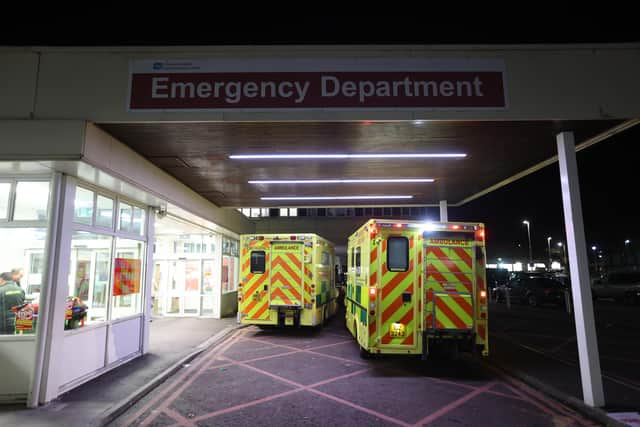More than £100 million needed to repair crumbling buildings at Doncaster and Bassetlaw Teaching Hospitals Trust
and live on Freeview channel 276
Across England, a growing number of buildings are in a poor state, with the repair bill climbing to £11.6 billion last year.
NHS Providers, the body which represents NHS hospital, mental health, community and ambulance services, said the rate at which the bill is rising is "alarming", and urged the Government to provide much-needed investment in broken buildings.
Advertisement
Advertisement
The latest NHS Digital figures show £151 million is needed to restore buildings at Doncaster and Bassetlaw Teaching Hospitals NHS Foundation Trust to certain standards as of March.


This work should have already taken place and covers everything from leaky gutters and faulty lifts to critical electrical and structural issues in hospital buildings. It does not include planned maintenance due to be undertaken.
Of this, £16.9 million is required to fix high-risk issues, which NHS reports say must be addressed with urgent priority to prevent catastrophic failure, major disruption to clinical services, or safety deficiencies liable to cause serious injury.
The most expensive site was Doncaster Royal Infirmary, with £117 million needed to complete all the necessary repairs.
Advertisement
Advertisement
Nationally, the maintenance backlog rose by more 13 per cent last year, including £2.4 billion earmarked to eradicate the high-risk backlog.
Chief executive of NHS Providers Sir Julian Hartley said: "The cost of trying to patch up creaking buildings and out-of-date facilities is rocketing. Far too many NHS buildings and equipment are in a very bad way, and the situation is just getting worse.
"The safety of patients and staff is at stake. To provide first-class care, the NHS needs safe, efficient and reliable buildings, facilities and equipment."
In October, the Department for Health and Social Care confirmed 42 sites have reinforced autoclaved aerated concrete (Raac) and must be repaired.
Advertisement
Advertisement
This included Bassetlaw District General Hospital at Doncaster and Bassetlaw Teaching Hospitals Trust.
Dr Kirsty Edmondson Jones, director of Innovation and Infrastructure at Doncaster and Bassetlaw Teaching Hospitals, said: “Our dedicated teams work hard on a daily basis to ensure our hospital sites remain safe and functional, despite the challenges posed by aging infrastructure, much of which dates back to the 1930s and 1960s.
“Unfortunately, we were not successful in our application to join the Government’s New Hospital Programme in 2023, however we're actively building a positive case for refurbishment at Doncaster Royal Infirmary, aiming to enhance our facilities and, eventually, eradicate all backlog maintenance whilst increasing the percentage of the site classified as ‘functionally suitable’.
“Our commitment to patient safety remains steadfast, and we are optimistic about the plans which are currently being developed and look forward to improving services for the people of Doncaster and Bassetlaw in the not-too-distant future.”
Advertisement
Advertisement
Sir Julian said the presence of the collapse-risk concrete "is a symptom of a far bigger and long-running problem".
"Many trusts – mental health, community, hospital and ambulance services – need major investment to refurbish ageing buildings and tackle risks to the safety of patients and staff," he added.
"We need the Government to shift gear and inject a significant shot in the arm of capital investment in the NHS."